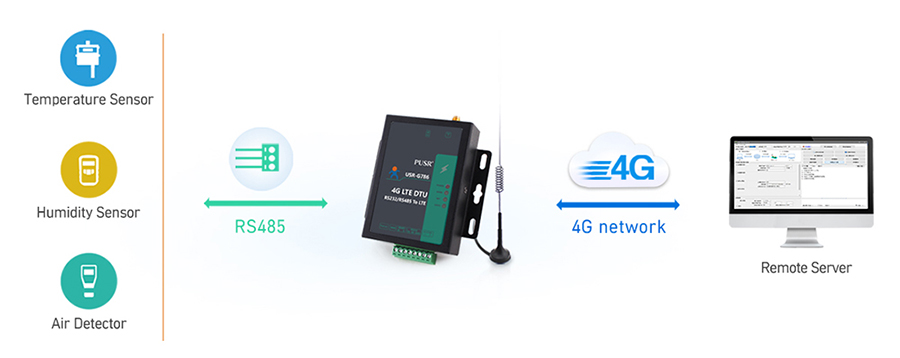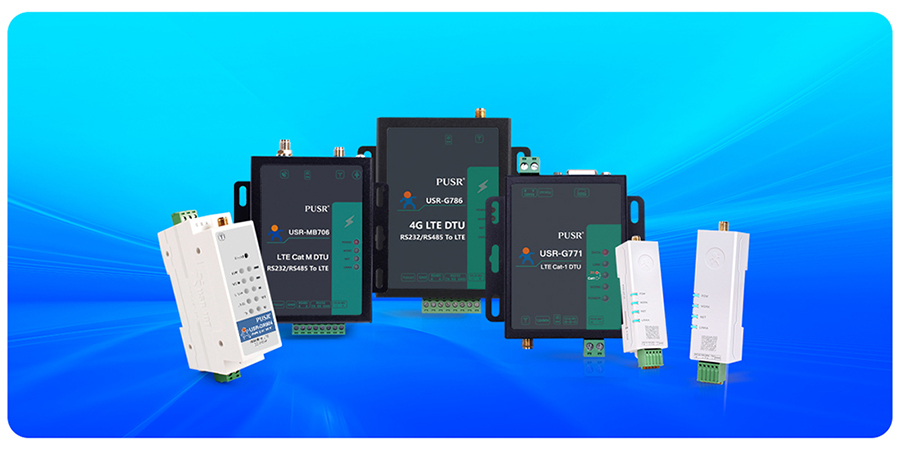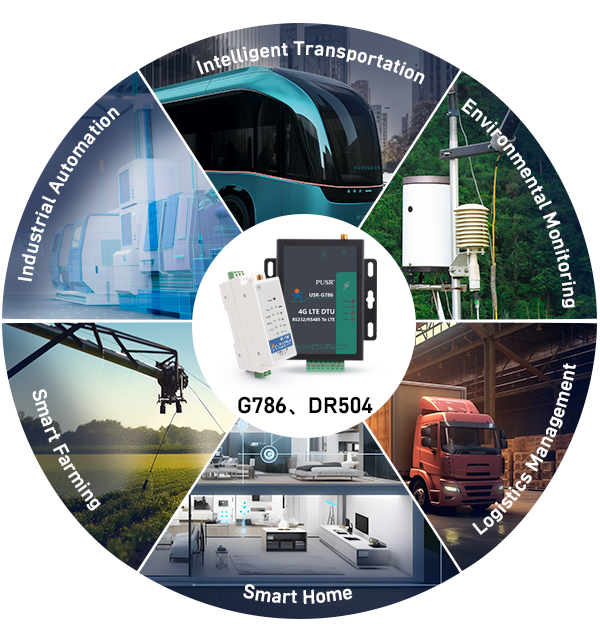Modem is data terminal equipment. In a broad sense, during communication, the module unit responsible for sending data information at both ends of the link transmitting data is called a Modem, which performs format conversion and data collation and verification on the transmitted information; in a narrow sense, the Modem generally refers to the lower 4G/LTE transmitting terminal equipment in wireless communication.
The full name of Modem is data transmission unit, which uses 5G/4G wireless and wired network to package local serial port data into IP data through Modem or convert IP data into wireless communication terminal of serial port data for remote transmission.
Modem is mainly used for wireless data transmission. Moreover, it is through long-distance wireless data transmission, and the objects of transmission are equipment and data centers or equipment.
Multi-center sending mechanism, visual display of multi-level data, easy to obtain data synchronously;
Encrypted transmission on the basis of the private network to fully ensure the security and accuracy of the data;
Support TCP server function, support access to data center according to domain name and IP address;
A watchdog detection mechanism with three levels of software, hardware and CPU is adopted; Multiple detection mechanism, running fault self-repair, to ensure that the equipment is permanently online;
Embedded PPP, TCP/IP, UDP/IP, MODBUS-TCP, MODBUS-RTU and other protocols, compatible with proprietary protocols of manufacturers.

Modem connects the terminal equipment through the interface to obtain data, and then transmits it wirelessly through the operator network (2G/3G/4G) to the designated data center or equipment. At the same time, the reverse data center can also send data or instructions to the Modem through the operator network, and then the Modem sends them to the terminal equipment through the interface.
According to the classification of communication modes, Modem generally adopts 4G/LoRa/WiFi, etc. Customers can choose the best communication mode according to their own application scenarios.
Classified by interface type, Modem generally supports RS485, RS232, I/O and other interfaces, and customers can select the appropriate interface type according to the interface of their own front-end acquisition equipment.
In addition, there is an embedded Modem, which is similar to the general Modem in function. The main difference is that it has no shell and is an embedded motherboard. Customers can integrate it into their own front-end acquisition equipment.


Modem has been widely used in electric power, water conservancy, environmental protection, meteorology, transportation, logistics, industry and other fields. It provides help for the integration of information and industry among various industries, and gradually develops into the core technology of Internet of Things applications.
Sure, here's the translation of the scenarios mentioned into English:
The application scenarios of DTU are vast, covering virtually all areas that require remote data transmission and monitoring. With the continuous development of IoT technology, the scope of DTU applications is expected to expand further.

